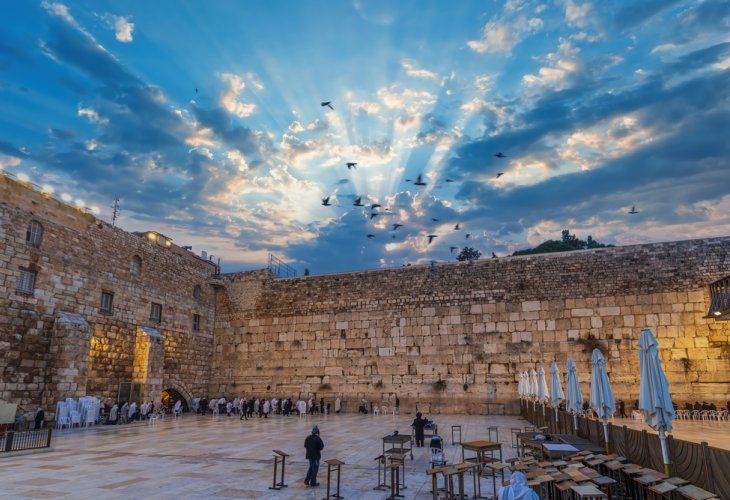Jewish Law
Guidelines for Visiting the Western Wall
The importance of treating this holy area with reverence and respect
 (Photo: shutterstock)
(Photo: shutterstock)Gateway to Heaven
Visiting the Western Wall (known as the Kotel, or the Kotel Hama’aravi) for the first time can be an overwhelming experience. It’s not just the history of the site; it’s the holiness that emanates from the ancient stones and the last remnants of the Holy Temple.
The Talmudic Sages tell us:
“The Shechinah (Divine Presence) never left the Western Wall of the Temple.”
This is why it’s still so powerful to pray there, even today when the Temple is no longer standing. The Torah states that prayers at the Western Wall enter “an open gate” to Hashem’s throne.
How should I dress when going to the Western Wall?
The Western Wall is not just a historic site of great cultural significance. The Torah is clear that the Temple site is the holiest place in the entire world. It’s a place we should approach with respect and reverence.
What this means in practice is that men should cover their heads with a yarmulka (kippah) or other respectable covering, and wear clothing that demonstrates their respect for the site’s holiness.
Married women must cover their hair and all females, married or not, should wear long sleeves (below the elbow) and long skirts (not pants, and the skirt should comfortably cover the knees).
May one eat and drink near the Kotel?
Not only snacking is forbidden near the Kotel, but also chatting and smoking and anything else that involves treating the holy site as simply a cultural venue.
Similarly, it is disrespectful to use the Kotel simply as a backdrop for a photo-shoot if one has no intention of praying there. Taking a solemn, respectful photo is permitted.
If a bar mitzvah ceremony or other religious event is being held at the Kotel and the hosts wish to serve refreshments, they should do so in the area beyond the prayer plaza.
Should one kiss the stones of the Wall? What about inserting a note?
It is permissible and in fact a mitzvah to kiss the holy stones. One may also insert a note. The cracks between the stones do not reach into the more sacred area beyond the wall, so this is not a matter of concern.
This is also why one may wear shoes even in the area immediately next to the stones.
Any person may enter this plaza, regardless of whether they have immersed in a mikveh (ritual bath) beforehand.
What about going up to the Temple Mount itself?
It is categorically forbidden to ascend to the Temple Mount in our times, when everyone is in a state of impurity and there is no way of becoming pure.
The Temple Mount includes the entire area behind the wall—the courtyards, the sanctuary, etc..
The prohibition of entering the Temple Mount area in a state of ritual impurity is so severe that the punishment is karet—being spiritually cut off from the Jewish People.
What about flying over the Temple Mount, such as in a helicopter?
The air above the Temple Mount is also holy, to the same degree as the ground below; therefore, one may not fly overhead in order to observe it, take photographs, etc..
For thousands of years, Jews yearned to visit Jerusalem and the Western Wall. For thousands of years, even though Jerusalem has been conquered so many times, the Wall has remained standing, as our Sages predicted:
“Behold, He stands behind our wall, behind the Western Wall of the Temple, which Hashem swore would never be destroyed.”

